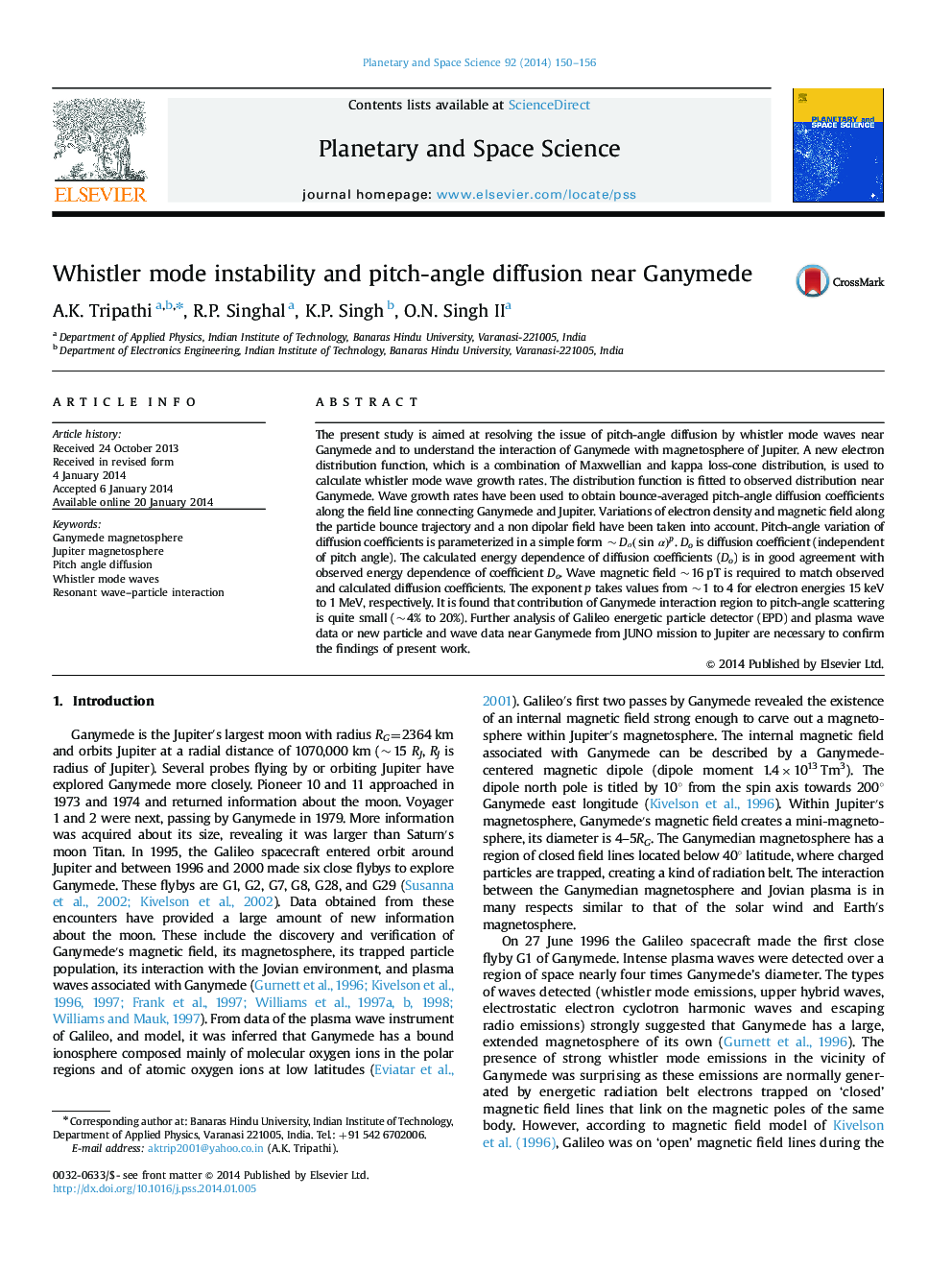| Article ID | Journal | Published Year | Pages | File Type |
|---|---|---|---|---|
| 1781173 | Planetary and Space Science | 2014 | 7 Pages |
•Whistler growth rates are calculated using distribution function near Ganymede.•Pitch angle diffusion rates are obtained on Ganymede–Jupiter field lines.•Wave field 16 pT is required to match observed and calculated coefficients.
The present study is aimed at resolving the issue of pitch-angle diffusion by whistler mode waves near Ganymede and to understand the interaction of Ganymede with magnetosphere of Jupiter. A new electron distribution function, which is a combination of Maxwellian and kappa loss-cone distribution, is used to calculate whistler mode wave growth rates. The distribution function is fitted to observed distribution near Ganymede. Wave growth rates have been used to obtain bounce-averaged pitch-angle diffusion coefficients along the field line connecting Ganymede and Jupiter. Variations of electron density and magnetic field along the particle bounce trajectory and a non dipolar field have been taken into account. Pitch-angle variation of diffusion coefficients is parameterized in a simple form ~Dο(sinα)p. Do is diffusion coefficient (independent of pitch angle). The calculated energy dependence of diffusion coefficients (Do) is in good agreement with observed energy dependence of coefficient Do. Wave magnetic field ~16 pT is required to match observed and calculated diffusion coefficients. The exponent p takes values from ~1 to 4 for electron energies 15 keV to 1 MeV, respectively. It is found that contribution of Ganymede interaction region to pitch-angle scattering is quite small (~4% to 20%). Further analysis of Galileo energetic particle detector (EPD) and plasma wave data or new particle and wave data near Ganymede from JUNO mission to Jupiter are necessary to confirm the findings of present work.
